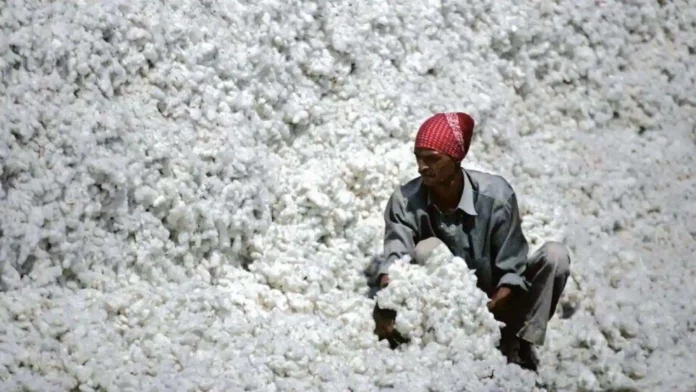According to U P Singh, the textiles secretary, the union government would implement a few reforms to increase cotton production in the nation, including the implementation of novel varieties of cotton seeds, scaling up macro irrigation, and offering opportunities for extra long staple (ELS) cotton.
” India has long been the world’s leading producer and exporter of cotton. But as of late, it is likely that we will stop being a net exporter of cotton and start importing it. According to Singh, the cause is that cotton consumption is increasing even if productivity and production have not grown. This is since cotton productivity has not changed much over the past year and now ranges from 450 to 500 kg per hectare, up from 400 kg per hectare in 2006–07. The productivity of cotton per acre over the world is currently 877 kg.
“The extra-long staple (ELS) kind of cotton has been one of the imports since local demand exceeds our ability to produce it. There are ideas that the ELS kind of cotton could have its MSP corrected by adding a new category for it,” the speaker continued. Cotton production gains importance since textiles make up a sizable percentage of the free trade agreements (FTAs) that India is negotiating with nations like the UK and EU. In addition, industry officials anticipate that the FTAs with Australia and the UAE will increase textile demand from India.
In order to increase cotton productivity in India and increase farmer incomes, according to textile minister Piyush Goyal, all stakeholders must exchange best practices. According to a statement issued by the Textile Ministry, Goyal stated that the private sector must contribute to advancing productivity studies, farmer education, and branding efforts, with the government providing matching support.
Singh added that the estimated cotton yield for this year, at 315 lakh bales, is the lowest compared with the previous few years. According to him, domestic consumption of cotton was roughly 300 lakh bales per year, compared to an annual average cotton production of 350 to 360 lakh bales. “Our surplus used to be about 50-60 Rake bales but is declining every year. In addition, the Indian industry enjoyed a 10% price advantage in the cotton sector. According to Shin, our consumption soon exceeds our country’s production, so its benefits are no longer there.
The government also stated that in order to improve the Cotton Value Chain, the private sector must operate in mission mode. He continued by saying that we must brand our own cotton, which is of high quality, with equal assistance from business.
Follow and connect with us on Facebook, LinkedIn & Twitter.

